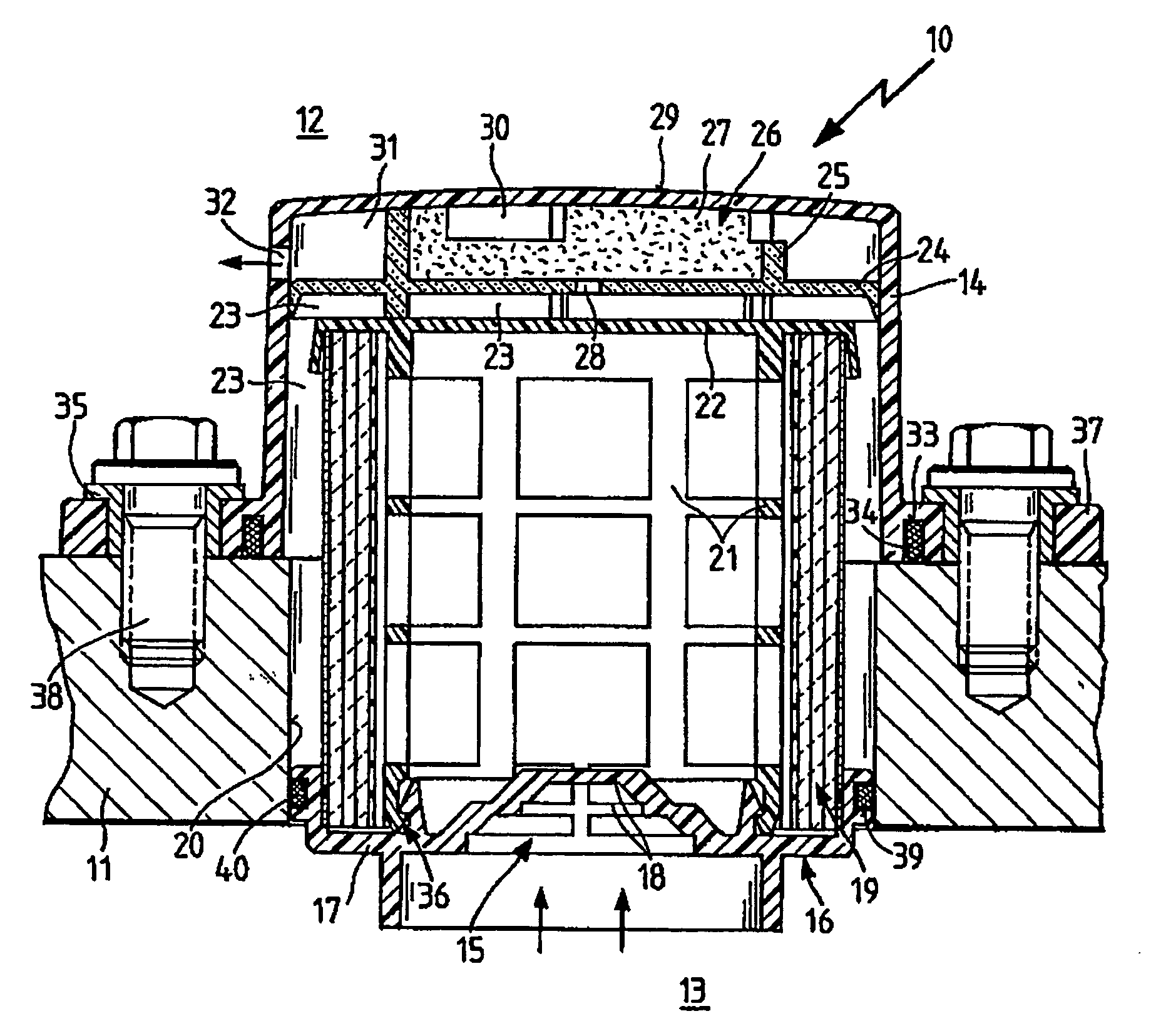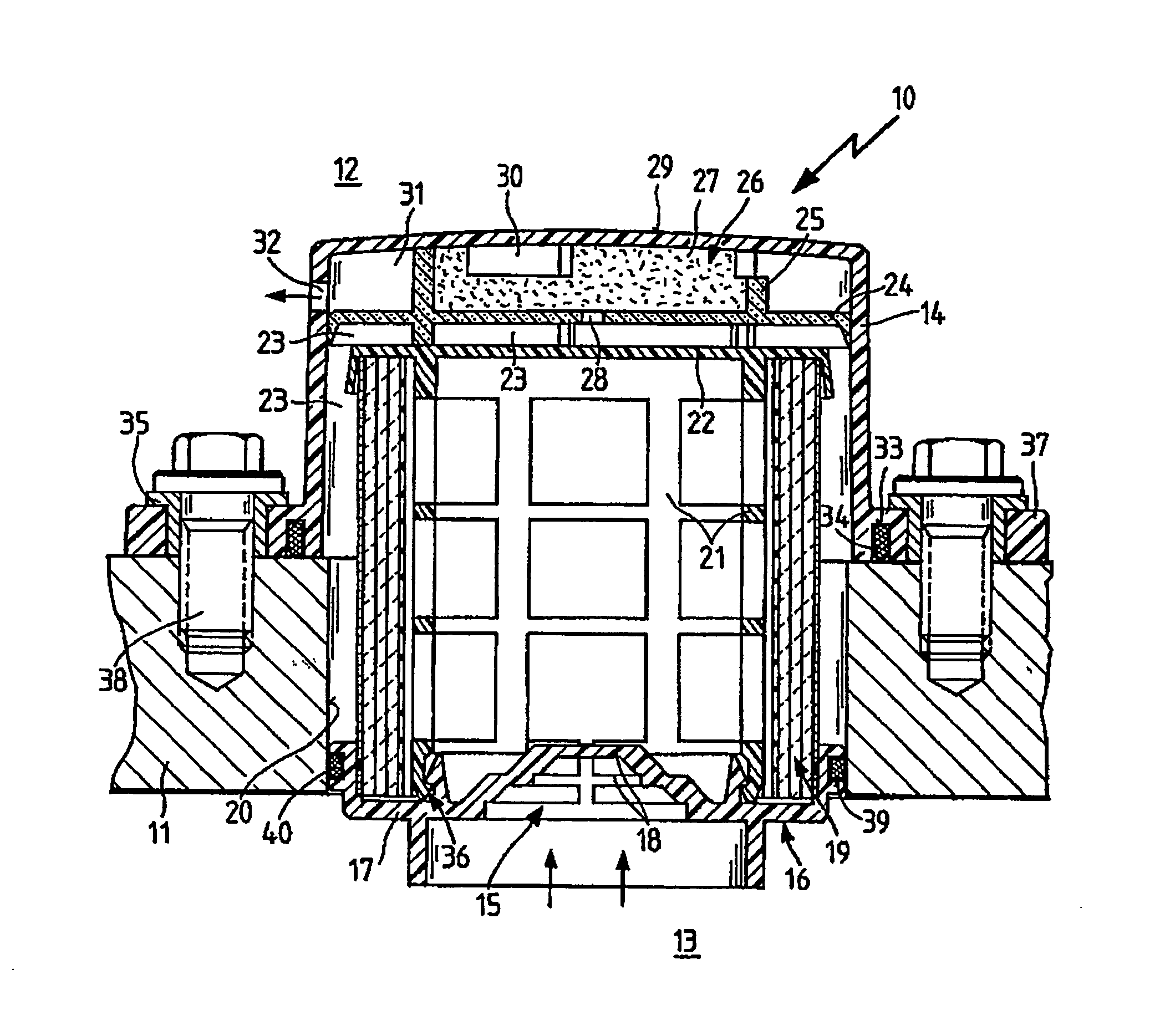Oil separator
a technology of oil separator and oil stream, which is applied in the direction of separation process, machine/engine, mechanical apparatus, etc., can solve the problems of not taking into account the oil-laden air stream, and achieve the effect of minimizing the oil discharge, simple and economical manufacturing, and maximizing the flow cross section
- Summary
- Abstract
- Description
- Claims
- Application Information
AI Technical Summary
Benefits of technology
Problems solved by technology
Method used
Image
Examples
Embodiment Construction
[0032] In the figure, the oil separator 10 is flanged to a housing 11 (only part of which is shown) and secured by screw connections 38. An impingement separator 15, a filter element 19 and a condensate separation space 26 are accommodated within the outer casing 14. The outer casing 14 encloses the oil separator 10 around the periphery and is constructed as an integral unit with an end face of the outer casing 29. As an alternative to this embodiment, the end face of the outer casing 29 may also be constructed as a separate element and fastened to the outer casing 14. In addition, apertured receiving lugs 37 are formed on the outer casing 14, which are tightened to the housing 11 by a screwed connection 38 using metal bushings 35. To terminate the outer casing 14 on the housing 11 so as to form a seal, an elastomer seal 34 is seated in a circumferential groove 33 to produce a tight connection with the housing surface. Thus, the interior of the housing 13 is separated from the exter...
PUM
| Property | Measurement | Unit |
|---|---|---|
| Size | aaaaa | aaaaa |
| Area | aaaaa | aaaaa |
| Metallic bond | aaaaa | aaaaa |
Abstract
Description
Claims
Application Information
 Login to View More
Login to View More - R&D
- Intellectual Property
- Life Sciences
- Materials
- Tech Scout
- Unparalleled Data Quality
- Higher Quality Content
- 60% Fewer Hallucinations
Browse by: Latest US Patents, China's latest patents, Technical Efficacy Thesaurus, Application Domain, Technology Topic, Popular Technical Reports.
© 2025 PatSnap. All rights reserved.Legal|Privacy policy|Modern Slavery Act Transparency Statement|Sitemap|About US| Contact US: help@patsnap.com


